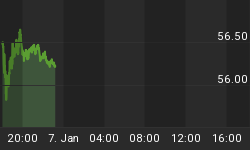Existing home sales bounced 5.1% from February's steep decline of 7.3%, originally reported as -7.1%.
Sales came in at a 5.330 million seasonally adjusted annualized rate (SAAR), better than the Bloomberg Econoday consensus estimate of 5.286 million.
Highlights
Existing home sales rose more than expected in March, up 5.1 percent to a 5.330 million annualized rate that, however, fails to reverse a downwardly revised 7.3 percent drop in February. And the year-on-year rate, at only 1.5 percent, is decidedly weak. But looking at the first quarter as a whole, which is important for housing data given their volatility, existing home sales are up a much more respectable 4.8 percent.
March's gain is led by the most important component, single-family homes where the rate rose 5.5 percent in the month to 4.760 million. Year-on-year, single-family homes are up 2.6 percent. The showing for condos is less convincing, up only 1.8 percent in the month for a year-on-year decline of 6.6 percent.
Prices in this report are up, a monthly 5.0 percent for the median for a year-on-year rate of plus 5.7 percent which closely tracks rates in FHFA and Case-Shiller data. The median price for an existing home is $222,700 which, outside of last year's Spring selling season when the median peaked above $230,000, is the best of the recovery.
Higher prices help pull in more homes into the market, at 1.980 million in March for a sharp 5.9 percent gain from February. Yet year-on-year, supply is still weak, down 1.5 percent. Looking at supply relative to sales, supply is at 4.5 months which is up slightly from 4.4 months in February and down slightly from 4.6 months in March last year.
Regional data are very positive with all four regions showing monthly gains led by the Northeast at an 11.1 percent surge. The Northeast also leads the year-on-year rates at plus 7.7 percent with the West bringing up rear at a 2.5 percent decline.
Realtors are generally upbeat right now and the housing market, though not on fire with weakness still appearing on the new home side, could be poised for a solid Spring season, one that would contribute to a needed pickup in the pace of the overall economy.
Recent History
A 3.7 percent March surge is expected for existing home sales which however plunged 7.1 percent in a February drop that the usually upbeat National Association of Realtors underscored as meaningful. The strength of the jobs market has yet to be reflected in home sales, the result in part of low wage growth. Low supply and only marginal price appreciation have long been negatives in this report.
Housing Flatlining
Yesterday we noted Housing Starts Plunge 8.8%, Permits Plunge 7.7%; Bloomberg Cites "Fundamental Strength".
Bloomberg's alleged "fundamental strength" strength was based on easy year-over-year comparisons that will vanish next month.
Housing Starts 2004-2016

Changing Attitudes Explains Housing
Today Bloomberg says "The strength of the jobs market has yet to be reflected in home sales."
Some of us question the alleged "jobs strength". People working multiple part-time jobs does not a strong jobs market make.
That said, the real key to the weak rebound in home sales is changing attitudes. Millennials have different attitudes towards debt, housing, and family formation than the baby boomer generation.
The millennials appreciate mobility and flexibility much more than boomers.
Factor in massive amounts of student debt and the fact that unprecedented numbers of children in their late 20s or even 30s still live at home (some need to take care of elderly parents, others cannot afford a house), and one should not expect robust home sales or a huge surge in family formations.















